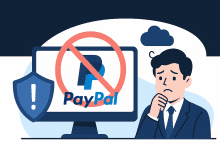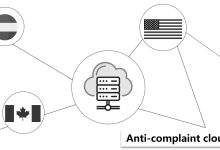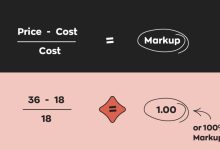As entrepreneurs in the cross-border ecommerce space, there’s one question we must ask ourselves before launching any project:
What is the core technology of this business? Where are the true bottlenecks?
Misconception #1: The Core Is in Coding and Development
Some believe that programming and software development are the “core technologies” of running an ecommerce business.

But this is a classic case of tunnel vision—a viewpoint common among developers. It’s seeing the trees, but missing the forest.
Cross-border ecommerce is not a foundational tech industry. It’s not about building operating systems, hardware drivers, or deep algorithms. That work belongs to engineers at places like Google Research. Instead, ecommerce belongs at the top layer of the internet economy—the application level—where user experience, operations, and traffic matter most.
So What Is the Core of Cross-Border Ecommerce?
Let’s break it down by model:
-
For marketplace sellers (e.g., Amazon, Etsy): the key skill is mastering the platform’s rules, ranking logic, and customer behavior.
-
For social commerce sellers (e.g., Facebook, Instagram): the core ability is content creation, engagement, and targeting—understanding how to move traffic with emotion and interest.
-
For self-hosted store owners (e.g., WooCommerce, Shopify, OpenCart): the real strength lies in leveraging open-source tools, themes, and plugins efficiently. The goal isn’t to code from scratch—it’s to assemble and adapt quickly.
In all these cases, deep technical development isn’t required. You don’t need to write a new algorithm to run a profitable replica product store. What you need is:
-
Strong operational thinking
-
A good eye for product-market fit
-
Skills in branding, funnel building, and user experience
Why Most Successful Founders Don’t Write Code
In reality, 99.99% of successful cross-border ecommerce entrepreneurs don’t write code—and they don’t need to. They understand systems, marketing, and execution.
Programmers are essential, but often remain in support roles unless they evolve beyond coding into project managers or growth strategists.
That’s the difference between being a technician and being a founder.
Misconception #2: Capital is the Real Core Technology of Reolica e-commerce
Some people say:
“Capital is the ultimate core technology.”
And in many ways, they’re not wrong. Capital—money itself—has a terrifying kind of power. For most people, it’s an unreachable force that changes everything. To put it simply:
Where capital flows, anything becomes possible. Where capital dominates, nothing else survives.
Look at today’s major players in the global ecommerce game:
-
Amazon’s FBA empire is powered by full-stack logistics and financial backing.
-
SHENIN’s industrial-grade supply chain reflects years of infrastructure investment.
-
Temu, the overseas version of Pinduoduo, pushes ultra-low pricing with a “refund without return” model—subsidized by billions.
-
TikTok Shop is conquering markets across continents with viral algorithms and aggressive cash-burning tactics.

These are not organic success stories. They are products of capital warfare.
Wherever capital goes, it rewrites the rules. And when the battle ends, many independent sellers are left with nothing but broken dreams and zero margins.
Capital Is a Fortress—But Not for Everyone
Capital is the fortress of the rich, the moat of those who already own the game. The investors and venture-backed platforms sit comfortably on their war machines, calling it “the jungle rule”—survival of the fittest.
They’ll say:
“If you can’t keep up, you deserve to be eliminated.”
“This is what capital power looks like.”
And in some sense, they’re right.
But what about the rest of us?
What about small and mid-sized sellers, the backbone of cross-border ecommerce?
In this environment, small sellers must avoid head-on collisions with big capital. The only way to survive is through differentiation.
That means:
-
Offering customized and value-added products
-
Entering niche segments like H5-based commerce or replica product stores
-
Exploring models like blind box sales, vape exports, or trend-driven microbrands
-
Building lean, flexible DTC websites instead of relying solely on platforms
Survival is the foundation of all strategy. You can’t compete with billions—but you can carve out your own moat.
Find Your Lane, Build Your Fortress
The right niche for you is the beginning of your real moat.
Your core technology is not capital—it’s adaptability, creativity, and execution.
In a world ruled by giants, agility is your superpower.
How to Thrive with a Replica Product Store?
If you’re not playing the capital game, then you must play the precision game.
One of the most viable lanes for small sellers in cross-border ecommerce is building a replica product store—a self-hosted, direct-to-consumer (DTC) site focused on high-margin, design-driven replica goods.
Done right, this model allows sellers to bypass platforms, control branding, and capture the full value chain.
Why the Replica Niche Still Works?
Despite the saturation in many markets, replica products still offer unique advantages:
-
Strong demand + visual appeal: From fashion and sneakers to bags and watches, replica goods often follow global aesthetic trends. They sell not just because they’re cheap, but because they look aspirational.
-
Search-driven or community-driven traffic: These products perform well in niche SEO, Telegram groups, Reddit forums, or Discord-based selling models.
-
Low acquisition cost per customer (if marketed smartly)
-
High ROI per item: Unlike dropshipping $10 gadgets with 5% margins, replicas can have 200–400% markup potential.

But to succeed in this space, you must be strategic.
Step 1: Choose the Right Product Segment
Avoid trying to sell everything. Focus on one product vertical. Examples include:
-
Replica sneakers (e.g., Yeezy, Jordan 4, Nike Dunk)
-
Replica designer bags (e.g., Dior, LV, Prada)
-
Replica watches (e.g., Rolex, Omega)
-
High-fidelity streetwear (e.g., Fear of God, Supreme)

Pro tip: focus on “1:1 replica” and “design-inspired but unbranded” versions to stay in a lower-risk grey area.
Step 2: Pick the Right Model — Open-Source First
Don’t build from scratch. Use mature, open-source ecommerce frameworks:
-
WooCommerce + WordPress
-
OpenCart
-
PrestaShop
-
Or even Shopify + Private Checkout workaround (with caution)

Key benefits:
-
Full control over product pages
-
Easy integration with crypto or third-party payments
-
Customizable front-end for visual trust
-
Avoids platform bans or takedowns
Step 3: Traffic Strategy – Go Where the Platforms Don’t
You don’t need Google Ads or Facebook BM accounts to scale.

Instead, consider:
-
SEO on long-tail keywords like “replica Dior bag 1:1” or “Jordan 4 budget version”
-
Telegram group marketing with invite funnels
-
Twitter/X and Reddit threads for niche communities
-
Affiliate recruitment: find micro-influencers in “plug” culture
-
Private landing pages with TikTok organic traffic redirection
Step 4: Build a Strong Backend
Even without big capital, you can build a smooth operation with:
-
Sourcing from Putian or Guangzhou replica suppliers
-
Automated order capture via WhatsApp, email, or Telegram bot
-
Use cryptocurrency payments (USDT, Bitcoin) for borderless, irreversible payments
-
Encrypted file-sharing for catalogs
-
Blind shipping with no logo packaging
Keep it lean. Keep it agile. But keep it professional.
Final Thoughts
In the era of big capital and ruthless platform policies, replica ecommerce is not for everyone—but for the bold and strategic, it’s a rare blue ocean.
The key is:
-
Don’t copy big brands. Replicate their aesthetic logic.
-
Don’t fight on price. Win with trust and community.
-
Don’t chase every trend. Master one lane, and scale with discipline.
Don’t wait for permission. Build your own store. Claim your market.
 Custom E-commerce Solutions for High-Quality Designer-Inspired Fashion Replicas | Website Development, Dropshipping, Payment Integration for PayPal and Stripe, Ad Cloaking Services
Custom E-commerce Solutions for High-Quality Designer-Inspired Fashion Replicas | Website Development, Dropshipping, Payment Integration for PayPal and Stripe, Ad Cloaking Services





![5 Best WordPress Themes for Replica Product International Trade Websites [Recommended]-Custom E-commerce Solutions for High-Quality Designer-Inspired Fashion Replicas | Website Development, Dropshipping, Payment Integration for PayPal and Stripe, Ad Cloaking Services](https://replicasmaster.com/wp-content/uploads/2025/06/1-1-220x150.jpg)

















